
75 Series Winch Instructions
Hydraulic Winch & P.T.O. System
Smooth Power
Reversible Mounting
No Battery Drain 12 or 24 volt
2121 Blount Road, Pompano Beach, FL 33069
(800) 886-8647 www.milemarker.com
ABUSED WORLD WIDE

Parts Listing Quantity
A. 93-50012 Hand Control Assembly
B. 90-501�
C. 90-50099 �
D. 86-50020 Washer 3/�
E. Wire Tie �
F. 90-50121 5/16-18x1 ½ socket Head (valve)
G. 86-50030 3/8 lockwashers
H. 93-50090 Female Connector
I. 90-50114 P�
J. 983-0067 Plate hold down screw
K. 983-0060 Lever Configuration plate
L. 93-80036 Circuit Breaker 24v 15amp
M. 90-50067 90º for valve
N. 90-50060 Male to female for valve 90º
O. 90-50091 Straight Fitting
P. 35-50300 75 Series Valve
Q. 19-51202 �
R. 93-50027 9ft red wire
S. 88-50060 Hose 60” (not shown)
T. 88-50078 Hose 78” (not shown)
(1)
(2)
(4)
(6)
(3)
(4)
(6)
(1)
(2)
(4)
(1)
(1)
(1)
(1)
(1)
(1)
(1)
(1)
(1)
(1)
Page 1

ATTACHING VALVE ASSEMBLY TO WINCH MOTOR. (SEE FIGURE 1)
Rotate winch onto its front so that smooth machined area on the winch motor is facing up.
Remove rubber plugs from holes in the side of the winch motor. Remove the 2 Motor square-cut 0-rings from
rubber plugs and re-seat at the lips of the holes from which they were removed in the motor.
Remove rubber bands from valve assembly being sure not to drop metal washers (B) and flow disk (C).
The purpose of the flow disk is to maintain back pressure for controlled release of cable under tension. If this
disk is installed improperly it will negatively affect the performance of your winch and greatly reduce its pulling
power. This is a safety item; IT MUST BE INSTALLED.
BEFORE SECURING VALVE ASSEMBLY TO THE MOTOR MAKE SURE THAT THE FLOW RESTRICTOR DISK IS IN PORT
LABELED #1 WITH THE FLAT SIDE FACING THE SOLENOID BODY AND THE CUT SIDE FACING THE WINCH MOTOR. Also,
make sure that the hole(s) in the valve assembly have thin O-ring(s) installed, then re-seat the metal washer(s).
*A small dab of axle grease can be used to help hold the metal washers in place.
Use the four allen bolts supplied (f-5/16 18 X 1 ½ SS Socket Head Cap Screw) to mount the solenoid valve to the
winch motor. Make sure to Lock-Tite the allen bolts using no washers. Tighten to 25 ft/lbs.
*Note: Lock-Tite not included.
FIGURE 1
Page 2
Used On 9,000 lb -10,5000 lb Winches Used On 12,000 lb Winch

MOUNTING WINCH
Winch body on 9000 lb. and 10500 lb. winch has mounting holes only on the bottom. Winch body on 12000 lb.
winch has four mounting holes on front, back, and bottom of the winch. This may allow the winch to be mount-
ed easier on some winch mounts or for other applications.
The motor on Mile Marker 2-speed winches may also be rotated in 90º increments if needed. This may allow
easier installation on some winch mounts.
TYPICAL INSTALLATION
Depending on amount of clearance between winch mount tray and winch body, attach the roller fairlead with
two bolts (B-3/8 16 X 1¼ SS Hex Head Bolt) through roller fairlead and pre-drilled holes on front of winch mount
tray and attach with 3/8 SS nuts (not provided) .
When facing grill of truck, position the winch with the hydraulic 2-speed levers to the left (passenger side).
The Free/Low lever will be on top. In this position, 4 mounting holes will be on the bottom on any style of Mile
Marker winch. CABLE MUST SPOOL OFF BOTTOM OF DRUM !
Attach winch to winch-mount tray by screwing 4 bolts (C-3/8 X 16 X 1 SS Hex Head Bolt) and washers (D-3/8 SS
Washer) through the pre-drilled holes in bottom of winch mount tray into bottom of winch body. Tighten to 35
ft/lbs. Make sure that you have AT LEAST 6 threads going into the winch legs, but NO MORE THAN 10 threads go-
ing into winch leg.
PLUMBING CONNECTIONS
Keep all hoses away from any areas where heat may be considered too extreme (such as exhaust manifold or
turbo). Lines cannot be mounted or allowed to rub on any abrasive or vibrating/moving surfaces
INSTALLATION PROCEDURES
REMOVAL OF FACTORY HOSE Take a clean drain bucket to catch the oil and place under the vehicle.
VACUUM BRAKES (NON HYDROBOOST)
If the vehicle is NOT equipped with hydroboost, remove the factory high pressure hose from the power steering
pump to the steering box. Let it drip dry, and store in safe place. This will be necessary to re-install if the winch
is ever removed from vehicle. See Figure 2.
HYDROBOOSTED
If the vehicle is equipped with hydroboost, remove the factory high pressure hose from the hydroboost to the
steering box. There is only one high pressure hose going to the steering box. See Figure 3.
Page 3

NOT SURE?
Which one is the high pressure hose? The hose with heavy duty crimped on fittings. The low pressure return
lines from the steering box or hydroboost both end up at the pump reservoir will have hose clamps or some-
thing similar.
Does the factory hose have a sensor in it? What this does is increase the rpm of the engine slightly when there
is high power steering pump pressure during idle. We have found this is not needed. Remove it from the factory
hose and install it back into the wiring harness plug. Tape it securely in place. The vehicles computer will not be
affected.
INSTALL THE ADAPTERS
Take the MM adapter kit for the vehicle; match the fittings up to those on the factory hose you removed. Re-use
the factory “O” rings; install them on MM fittings if required. There may be more than two fittings in the kit
due to multiple applications. You will only need two of them. Install them and tighten to the factory specifica-
tions. Take the solenoid fittings (“M”/90-50067 and “O”/90-50091) place into the “P” and “T” ports of the black
solenoid valve block. You will have to look and see where they will best suit your application in mating up with
the hoses from the engine bay. Then add the 90 degree “N”/90-50060 fitting to the straight fitting “O”/90-50091
you just installed. Remember the hoses will come thru either the grill or under the truck in an open area. When
you are sure of where the fittings will face, tighten them in place making sure the “O” ring is compressed (tight)
or for the flare fitting, ¼ turn past finger tight.
FIGURE 2
Page 4

CONNECTING THE HOSES
There will be two JIC -6 hoses provided in the kit. One is “S”/60” and the other is “T”/78”. Connect the 78”
hose from the power steering pump or hydroboost to the “P” port on the black solenoid block. Connect the 60”
hose from the “T” port of the black solenoid block to the steering box. These can go thru the grill of the truck
or under the radiator area. Tighten the flare fittings hand tight then go ¼ turn more. They can be longer than
needed sometimes as this is designed to fit many applications. For that custom look, the local hydraulic shop can
shorten them or call us, we can also do it. For pictures:
SEE FIGURE 2 for vacuum brakes
SEE FIGURE 3 for hydroboost brakes
*DO NOT OVER TIGHTEN FLARE FITTINGS
They will crack and then leak. The only way to fix them will be to replace them!
ELECTRICAL CONNECTION (FIGURE 4)
The power source to the solenoid can not be energized until the four-pole quick connector plug is plugged in.
Each solenoid has two black wires that are connected to each other at the factory and are grounded. The other
black wires will plug into the white and black wires from the hand control connection shown in figure 4. The
brown wire will go to ground from the female 4 pole plug gray box. Attach the circuit breaker to the vehicle
under the hood. Connect all wiring as shown in illustration. Test hand control unit, solenoids will make a slight
“click” sound if connected correctly. Do not start vehicle to do this test.
FIGURE 3
Page 5

WHEN DONE
Check Fluid Level. Replace lost fluid in system until full. To purge air, start engine, run for two seconds and shut
off engine. Check fluid level again. Add fluid until full. Do this until system stays full. Run truck for three minutes
or until fluid looses aeration. After system has been filled, turn wheels from lock to lock position (completely
right and left) five times. This will aid in bleeding out any air that may still be in the system. If the hand control
unit is working backwards, simply reverse the connections at the solenoids (switch the white and black wire on
the solenoid valve). See Figure 4. Make sure that you hear a slight “hiss” when the hand controller is pressed
“out” when the vehicle is running.
FIGURE 4
Page 6
WARNING
•Winch cable must be wound onto the drum under a load of at least 500 lbs or
outer wraps will draw into the inner wraps and damage the winch cable.

Page 7
MILE MARKER TWO-SPEED WINCH OPERATION
A. GENERAL
The vehicle’s steering pump is used to power the winch. The engine must be running while operating the winch,
as the engine turns the power steering pump which pumps fluid to rotate the winch. The winch will have full pull-
ing capabilities at an engine idle. The winch is operated by an electric activated switching valve.
B. PREPARATION FOR USE
1. For use in pulling objects other than self recovery, park vehicle directly facing object to be winched.
Apply parking brake.
2. Place transmission shift lever in “N” (neutral).
3. Chock wheels.
4. Start engine.
C. UNWINDING WINCH CABLE
To unwind cable by hand, turn top lever to “FREE” (free spool). Turn side lever to “FREE” (free spool). Both levers
should be in “FREE” positions to unwind cable. See Figure 5.
WARNING
•Wear leather gloves when handling winch cable. Do not handle cable with bare
hands. Broken wires cause injuries.
•When fully extending winch cable, make sure that five wraps of winch cable
remain on drum at all times. Failure to do this may cause serious injury.
•Pull off cable by hand to desired length. Connect to load leaving about one foot
of slack in cable.
•Place a blanket over cable near middle
D. PULLING LOAD
1. Turn top lever to “LOW” (lock low gear). Leave the side lever at “FREE” (free spool). This will engage the
winch into low gear.
WARNING
•Direct all personnel to stand clear of winch cable during winch operation. A
snapped winch cable will cause serious injury or death.
•Do not activate winch electric connector when engine is OFF with a LOAD on
cable. This can put the winch into a retarded free spool mode.
2. Operate remote control switch to “IN” or “OUT” until load has been retrieved. Secure winch after
operation.

E. OPERATION OF HIGH GEAR
1. Turn top lever to “FREE.” Turn side lever to “HIGH” (lock high gear).
MILE MARKER HYDRAULIC 2-SPEED WINCH LEVER POSITIONS (figure 5)
WARNING
•DO NOT shift levers with load on winch cable!
•DO NOT move shift levers when powering winch in or out!
LEVER POSITIONS AND WINCH MODES
LEVER #1 LEVER #2 MODE VIEW#
Free.......................................................Free...........................................Free Spool.............................1
Low..................�
Low........................................................Free...........................................Low Gear...............................3
Free.......................................................High...........................................High Gear..............................4
Page 8
View 1 View 2
View 4
View 3

Page 9
GENERAL OPERATION
•The vehicle’s hydraulic pump is used to power the winch. The engine must be running for winch operation. •The
winch has maximum pulling capabilities at engine idle.
•The winch is operated by an electrically activated hydraulic switching valve.
•Wear leather gloves when handling winch cable. DO NOT handle cable with bare hands as broken wires can
cause injuries. Always use a hook strap where possible.
•When extending winch cable, ensure that at least five wraps of cable remain on drum under load. Serious
personal injury or property damage may result.
•Ensure that all persons stand well clear of winch cable and load during winch operation, 1.5 times the cable
length is recommended. If a cable pulls loose or breaks under load it can lash back and cause serious personal
injury or death.
•Draping a heavy blanket or similar object over the extended winch cable is recommended as it will dampen any
lash back should a failure occur.
•Ensure rated “D” or bow shackles are used in conjunction with an approved tree trunk protector to provide a
safe anchor point.
•DO NOT operate the winch control when the engine is OFF and a load remains on the cable. This may put the
winch into a freespool mode when not required, therefore not holding the load.
•NEVER disengage the winch clutch under load.
•Store the winch with clutch lever function in the HIGH GEAR position.
•The maximum winch capacity is available on the first layer of rope on the winch drum. During all winching
operations it is recommended to unspool the rope back to the first layer to provide maximum capacity and avoid
rope damage.
•The use of a snatch block will aid recovery operations by providing: A doubling of the winch capacity and a
halving of the winching speed; and the means to maintain a direct line pull to the center of the rollers.
•The Mile Marker winch is a 2-Speed unit: low speed for vehicle recovery winching and high speed for line
retrieval.
•DO NOT use the winch to lift, support or otherwise transport personnel, as it is not to be used as a hoist.
•DO NOT drive your vehicle to assist the winch in any way. Vehicle movement in combination with winch opera-
tion may overload the cable, the winch itself, or cause damaging shock loads.
•Shock loads when winching are dangerous! A shock load occurs when an increased force is suddenly applied to
the cable. A vehicle rolling back on a slack cable may induce a damaging shock load.

WINCHING TIPS AND USE OF A SNATCH BLOCK
•Use OEM tow hooks, recovery eyes or a clevis mount for attachment of a tow strap or winch cable. Warning:
Never use a ball and /or ball mount as an anchor point for tow strap or winch cable. Severe personal injury or
death could occur.
•Always heed all winch manufacturer’s recommendations, cautions, and warnings.
•Attach return cable to tow hook or recovery eye when using a snatch block. Always use a clevis to secure
snatch block to strap, or severe damage could occur to persons and vehicle. (See Figure 6 Below). Caution: Never
attach return cable to winch mount. This may overload winch mount and/or front receiver.
RATING
For maximum line pull rating, winch cable direction must not exceed:
1. 15º angle up or down from horizontal (See Figure Below).
2. 45º angle left or right from straight ahead (See Figure 7 Below). Caution: Exceeding the maximum line pull
rating may overload winch, winch mount, and/or front mounted receiver.
Page 10
Figure 6
Figure 7

Page 11
SAFETY TIPS
•NEVER DISENGAGE LOW GEAR CLUTCH LEVER WHEN THERE IS A LOAD ON THE WINCH. To manually lock the winch
to hold a load, engage BOTH HIGH and LOW GEARS. First, engage low gear. After low gear is engaged, engage
high gear. Power the winch IN momentarily. You will hear the high gear engage, and the winch will “lock up.” In
this position, it is mechanically locked up and will not freespool, power IN or OUT. To disengage locked posi-
tion, disengage high gear lever to “FREE.” Power the load OUT momentarily and the spring loaded high gear will
disengage, leaving the winch in LOW gear.
•Store the remote control cord in a safe place when not in use to prevent use by children or other unauthorized
persons who could injure themselves or others or damage the controls.
•Do not operate winch under the influence of drugs, alcohol, or medications.
•Isolate winch before putting hands in or around the fairlead or wire rope drum (The Danger Zone).
•DO NOT OVERLOAD YOUR WINCH. Do not maintain power to the winch if the drum stops. Overloads can damage
the vehicle, winch or winch rope and create unstable operating conditions.
•It is recommended to lay a heavy blanket or jacket over the rope about halfway along to the hook attachment.
If a rope failure should occur, the weight of the cloth will act as a damper and help prevent the broken rope from
whipping (See Figure 8 Below). Remember to move the blanket or jacket as winching proceeds, but halt winching
when doing so. Partially raising the hood of the vehicle will also give a measure of protection to its occupants
from broken rope or cable, consistent with sufficient forward visibility for the operator.
SELF-RECOVERY
1. Always aim to get the cable as straight as possible to the direction of the vehicle. It is acceptable to start a
pull at an angle if it is obvious that the vehicle will turn towards the hook anchoring point. Turning the steering
wheel will assist the process. It is recommended that the driver is in the vehicle.
2. Make sure hand brake and foot brake are free and that the transmission is in neutral.
3. When the driver’s attempt to regain vehicle traction is successful, he or she should be careful not to overrun
the cable and risk the possibility of it being trapped under the vehicle.
4. DO NOT move your vehicle in reverse to assist the winch. The combination of the winch and vehicle pulling
together could overload the cable and winch itself.
Figure 8

USE OF A PULLEY BLOCK OR SNATCH BLOCK
Figure 9: Vehicle self-recovery using the pulley block attached to the anchor point for direct pull. In this instance
the vehicle becomes the “load” and the actual pulling power on the vehicle will be double at half winch rope
speed. Never connect wire rope or hook back to winch mount!
Page 12
Figure 10: Direct pull on load using the winch vehicles as the anchor with pulley block attached to the load.
Figure 9
Figure 10
The most important aid to successful winching (after the winch) is the pulley block, which can be used to in-
crease the pulling power of the winch of for indirect pulls. Pulley blocks can be used in two modes. First mode is
attached to the load and second is secured to an anchor point.
Truck Eye Hook or
“D” Ring Only.
Truck Eye Hook or
“D” Ring Only.

USE OF GlOVES
•When handling or rewinding the cable always use gloves to eliminate the possibility of cuts caused by burrs
and broken strands. Inspect cable and equipment frequently. The cable should be replaced immediately if any
sign of burrs or broken strands are evident. A frayed cable with broken strands should be replaced immediately.
Always replace the cable with a Mile Marker recommended replacement part. Any substitution must be IDENTI-
CAL in strength, quality, lay and stranding. Never hook the cable back onto itself. Hooking the cable back onto
itself creates an unacceptable strain, breaking individual strands which in turn weakens the entire cable. Use
a sling. Avoid continuous pulls from extreme angles as this causes cable to pile up at one end of the drum and
break the winch. Adjust the cable and ensure that line lays neatly across drum of winch.
USE OF A NYLON SLING AND SHACKLE
•A shackle should always be used when attaching winch hooks to nylon slings. NOTE: The shackle must pass
through both eyes of the sling. The safe working load of the nylon sling is based on the use of both eye ends.
Never use the cable or hook to connect directly to the nylon sling.
Figure 11: Indirect pull necessitated by obstructions or soft ground. Pulley block attached to load using a suit-
able anchor point. Note the angled direction taken by the load and subsequent angle of rope feed-back on the
winch drum (extreme example shown). There may be unavoidable circumstances requiring this mode, though
in general it is not recommended unless applied in stages by moving the anchor point or vehicle to avoid the
sharp angled rewind on the winch drum. The actual load pulling power and rope speed will depreciate with any
increased angle between the ropes.
The anchor point, when used must be secure, using a tree, another vehicle or any firm structure to which a pulley
block can be used to your advantage.
Figure 11
Page 13

Page 14
MILE MARKER INC. HYDRAULIC WINCH LIMITED WARRANTY
Mile Marker, Inc. warrants each winch when used in normal service against factory defects in materials and
workmanship to the original purchaser, (Commercial and Recreational Warranty) for the period of two (2) years.
(Exclusion from this warranty are cables, the finish, and any condition Mile Marker determines to have been
caused by misuse, abnormal use.) The Mile Marker hydraulic motor has a five (5) year warranty. The owner will
be responsible for removing the winch and returning it to Mile Marker freight prepaid. Mile Marker will repair or
replace any or all winch parts it determines to be defective after inspection. See each individual product package
for more detailed warranty information.

2121 Blount Road
Pompano Beach, FL 33069
www.milemarker.com
800-866-8647
-
 1
1
-
 2
2
-
 3
3
-
 4
4
-
 5
5
-
 6
6
-
 7
7
-
 8
8
-
 9
9
-
 10
10
-
 11
11
-
 12
12
-
 13
13
-
 14
14
-
 15
15
-
 16
16
MILE MARKER HI10500 Owner's manual
- Type
- Owner's manual
Ask a question and I''ll find the answer in the document
Finding information in a document is now easier with AI
Related papers
-
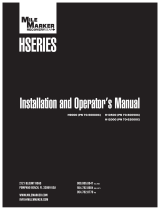 MILE MARKER 75-52000C Installation guide
MILE MARKER 75-52000C Installation guide
-
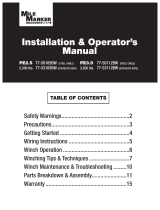 MILE MARKER 77-53112BW Installation guide
MILE MARKER 77-53112BW Installation guide
-
MILE MARKER 77-53141W Installation guide
-
MILE MARKER H10500 User manual
-
MILE MARKER SEC18 User manual
-
MILE MARKER SEC18 User manual
-
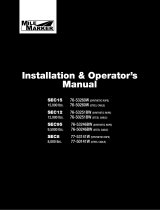 MILE MARKER 9042854 Owner's manual
MILE MARKER 9042854 Owner's manual
-
MILE MARKER MS12 User manual
-
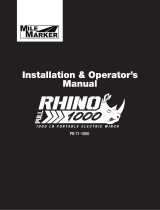 MILE MARKER 9042839 Owner's manual
MILE MARKER 9042839 Owner's manual
-
MILE MARKER 71-1000 Owner's manual
Other documents
-
X-BULL LT3000 ATV 3000 Ib 12 Volt DC Electric Winch Owner's manual
-
HARBOR FREIGHT BADLAND User guide
-
WARRIOR NH 10000 Winch User manual
-
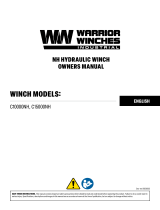 WARRIOR WINCHES C10000NH NH Hydraulic Winch Owner's manual
WARRIOR WINCHES C10000NH NH Hydraulic Winch Owner's manual
-
DK2 S17500 User manual
-
WARRIOR 80ENS24 Electric Winch User manual
-
WARRIOR Phantom Winch User manual
-
WARRIOR Ninja 3500 Winch User manual
-
WARRIOR Samurai 9500 Winch User manual
-
 Champion Power Equipment 80295 User manual
Champion Power Equipment 80295 User manual





















